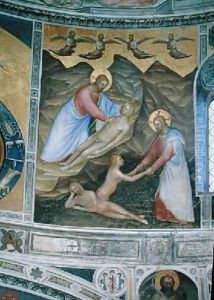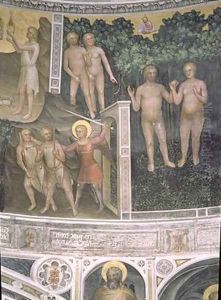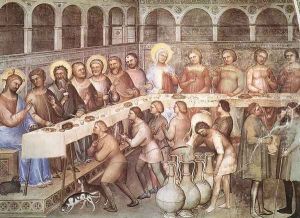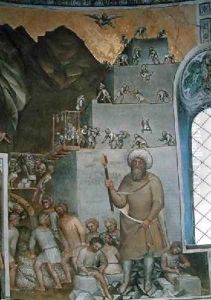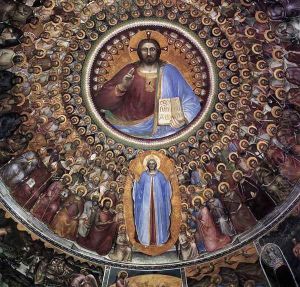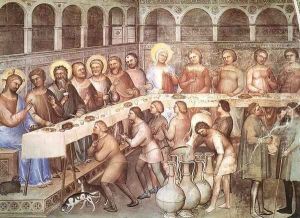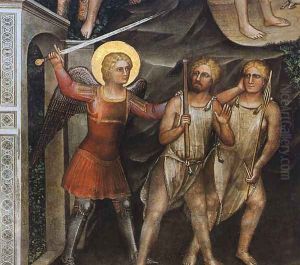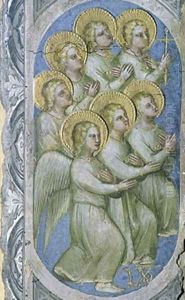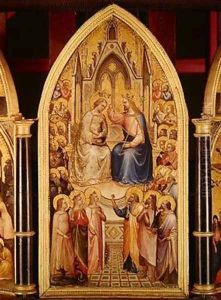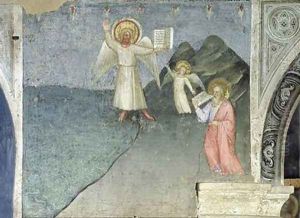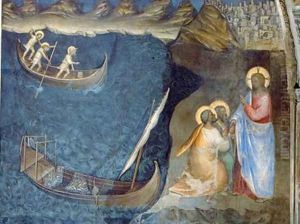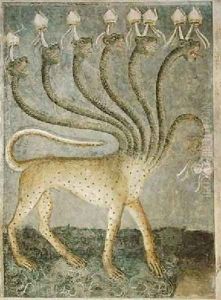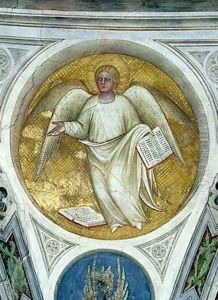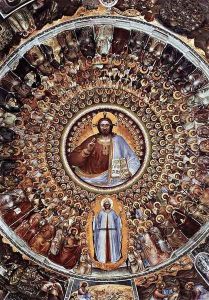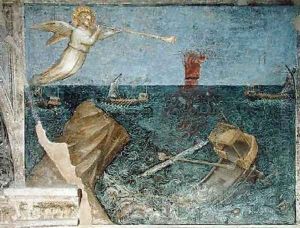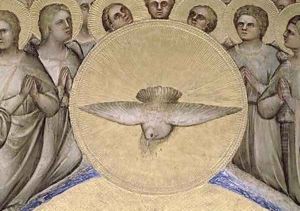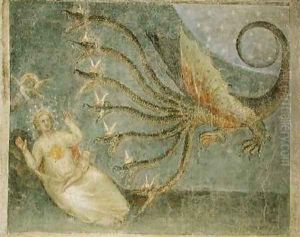Giusto di Giovanni de' Menabuoi Paintings
Giusto de' Menabuoi, born around 1320, was an Italian painter of the early Renaissance, notable for his significant contribution to the Paduan school of art. Little is known about his early life, including his exact birthplace, though some speculate it might have been Florence due to the stylistic influences evident in his work. He is often associated with the Florentine school, suggesting he may have trained or been influenced by artists within that circle before moving to Padua.
In Padua, Giusto de' Menabuoi found his most enduring success, particularly with his frescoes in the Baptistery of the Padua Cathedral, completed around 1375-1378. These works are celebrated for their vivid narrative detail and the harmonious integration of architectural elements with the painted scenes. His work in the Baptistery includes a remarkable ceiling fresco of Paradise, which is considered one of his masterpieces, showcasing a comprehensive and intricate depiction of Christian cosmology.
De' Menabuoi's style is characterized by its clarity of form, delicate color palette, and a detailed approach to human figures and landscapes, reflecting the transition from the Byzantine tradition to the more naturalistic styles that would define the Renaissance. Despite the evident influence of Byzantine art, his work also shows an innovative use of perspective and volume in figure representation, indicating the evolving artistic trends of his time.
After his significant work in Padua, records of de' Menabuoi's later life and career become scarce. However, his influence persisted in the region, marking him as a pivotal figure in the development of the Paduan school and, more broadly, in the transition towards Renaissance art. He is believed to have died around 1391, leaving behind a legacy that would inspire future generations of artists in Italy and beyond.
Giusto de' Menabuoi's contributions to art were not limited to frescoes; he was also known for his panel paintings, altarpieces, and possibly manuscript illuminations, although fewer of these works have survived or been definitively attributed to him. His ability to blend narrative storytelling with technical skill across various mediums marks him as a significant, if somewhat underappreciated, artist of his time.
